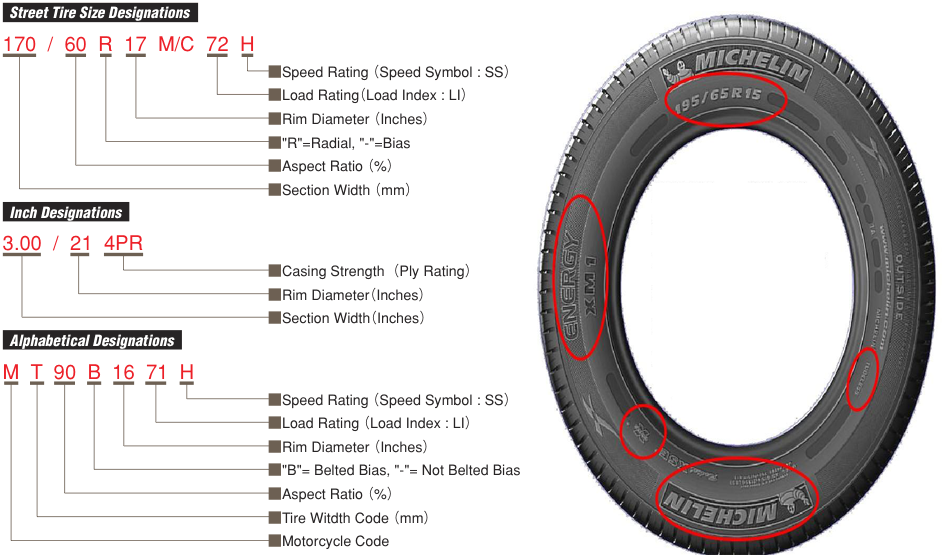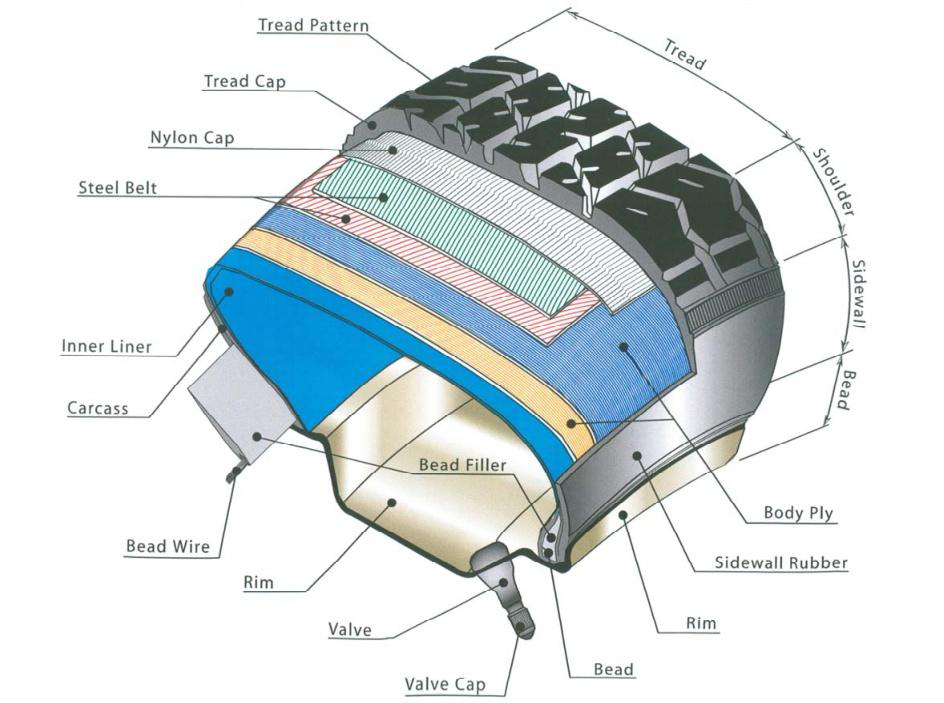There are many types of motorcycle tires, with different brands, different tread patterns, and different specifications.how to read motorcycle tire size?Generally speaking, qualified motorcycle tires are marked with the tire manufacturer, tire name, tire size, type, load index, speed code, arrow indicating the direction of tire rotation, national certification marks, country of production, etc. Among these symbols, motorcycle enthusiasts need to pay special attention to the tire specifications, which can be found in a prominent position on the tire tread.


Motorcycle tires usually consist of the following layers:
Carcass: The carcass is made of rubber and is used to make contact with the ground and provide friction and grip.
Steel wire layer: Steel wire layer is usually embedded in the casing layer to enhance the structure and wear resistance of the tire.
Inner tube: The inner tube is an inflated rubber tube used to maintain tire pressure and provide elasticity.
For detailed layering, refer to the picture above.
When purchasing tires, you should follow the original manufacturer’s specifications when purchasing and replacing them. They are all adjusted, and wider is not always better. The performance tread of the tire should also be selected according to your own usage scenarios. For example, if you often run on mud roads, mountains, non-paved roads, or even snow, you should choose off-road tires or tires with deep grooves to facilitate the drainage of water during work. Debris reaches high grip.
There is also life, one is to look at the wear marks on the tires. The age of the tires is calculated from the time they leave the factory, and the effective safety period is 3-5 years. If it exceeds this age, even unused tires need to be replaced because they will age.
Your motorcycle tires may need to be replaced when:
Serious wear: The tire tread is severely worn or even worn flat, which will affect the tire’s grip and handling performance.
Tread Cracks: Cracks appear on the surface of your tires, either due to age or prolonged exposure to sunlight.
Uneven tread wear: Certain parts of the tire are heavily worn while other parts are lightly worn, possibly due to uneven suspension or tire pressure.
Tire pressure is too low: Continuously low tire pressure will cause excessive tire wear and needs to be inflated or replaced in time.
Tread deformation: Obvious deformation or depression appears on the tire surface, which may be caused by impact or other external forces.
If you have any questions about replacing motorcycle tires, it is recommended to consult a professional motorcycle repair shop or consult the relevant motorcycle manual.
Join our mailing list to be the first one to know more new parts release and marketing info. Stay informed!


We will contact you within 1 working day, please pay attention to the email “wholesale@mpm-motorsports.com”
One Response
cwhGfklrgEH